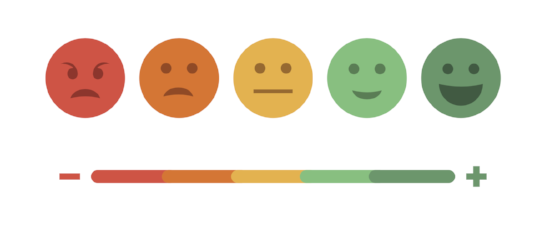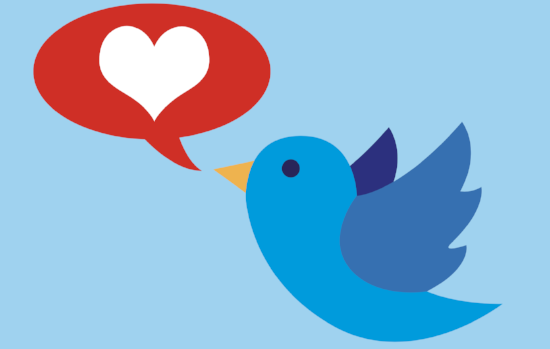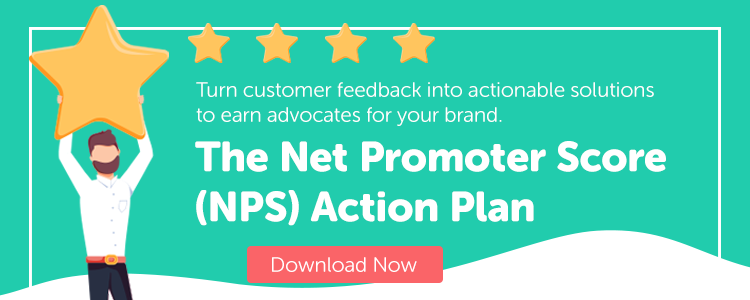Customer happiness and customer retention are closely intertwined.
Unfortunately, it’s difficult for organizations to be truly objective about customer satisfaction. Most teams face some temptation to inflate estimates of how pleased their customers are. And customers themselves are not always so transparent.
Think about this paradox, which helps explain why customer happiness is so slippery:
- Most people are more likely to take time out to share a bad experience than a good one.
- However, if you directly ask them, many will bite their tongue about a bad experience.

That means the two tools enterprises are most likely to use to measure customer happiness – social media listening and customer surveys – are imperfect instruments at best.
If you really want to get an accurate picture of customer happiness, you should know and use several methods. By evaluating different methods, you come up with a more accurate picture of the situation than you would with just one point of reference.
Let’s examine five of the most accurate ways to measure customer happiness:
1. Net Promoter Score
Net promoter score isn’t perfect, but it’s as close as you can get to a universal standard for customer satisfaction. It was once the cutting edge “in” thing that let organizations know which way their business was trending – and it still has a place in your customer delight efforts.
NPS is simple: It measures how likely a customer is to recommend your business to someone.
This is especially important for subscription-driven SaaS services, but it has a role to play for all B2B firms. Satisfied customers may decline to recommend your business when they aren’t yet sure whether you’ll really be able to keep them happy.
NPS is rated from 1 to 10:
- 0-6 is a detractor.
- 7-8 is a maybe.
- 9-10 is a promoter.
To get the score, subtract the percentage of detractors from the percentage of promoters. This gives you a data point oriented toward your customers’ long-term feelings.
2. Customer Satisfaction Score

Customer satisfaction scores are a short-term measure of how your customers feel about you right now. Collecting it allows you to uncover issues that should be addressed.
A typical customer satisfaction survey question has five options:
- Highly Unsatisfied
- Unsatisfied
- Neutral (or “Neither Satisfied nor Unsatisfied”)
- Satisfied
- Highly Satisfied
Once you’ve collected all your responses, the average response is the one that best indicates your average customer’s perception of your brand at this moment. While this can be shocking news, it can also be used to collect specific feedback and intervene to help your less satisfied customers.
3. Customer Effort Score
Customer Effort Score (CES) is about convenience – it’s a measure of how much effort your customers feel they have to invest to “deal with” your company. This is usually ranked on a 1-5 scale, and there are two common ways to word the question:
- “To what extent do you agree with the following statement: The company made it easy for me to handle my issue.”
- “How much effort did you personally need to put forth to handle your request?”
The second version is nearer to the original statement pioneered back in 2010. Subsequent research has shown the wording of the question may bias responses. Experts now recommend going with the first version of the question listed above, which is up to 25% more accurate.
4. Social Media Sentiment

Social media sentiment is fickle, but people are more likely to be honest – even brutally so – in the heat of the moment, when they’re ready to click that “tweet” button.
To get a handle on social sentiment, implement a dedicated social media monitoring tool configured to pick up mentions of your brand, your products, your executives, and any branded hashtags you use.
This provides you with two major advantages in customer happiness:
- You’ll see if brand mentions are positive, negative, or neutral over time.
- You’ll be able to respond directly to users with unanswered complaints.
This allows you to turn even negative feedback into a positive experience.
5. Survey Responses
Last, but not least, there’s the customer experience survey.
Surveys are tricky on three different levels:
- Customers who respond to your surveys are already likely to be the most engaged.
- The wording of each question can prejudice answers (or simply confuse people.)
- Without a clear plan to use the survey data, it may end up just sitting in a file.
The best way to make a survey work for you is to issue it soon after a service is used. Keep the questions short, clear, and specific, and reward customers for taking time out to help you.
When all is said and done, customer happiness is what it’s all about. With these five methods, you’ll be on your way to knowing where you stand and how to improve.


Rob Steffens
I am the Director of Marketing here at Bluleadz. I'm a huge baseball fan (Go Yankees!). I love spending time with friends and getting some exercise on the Racquetball court.